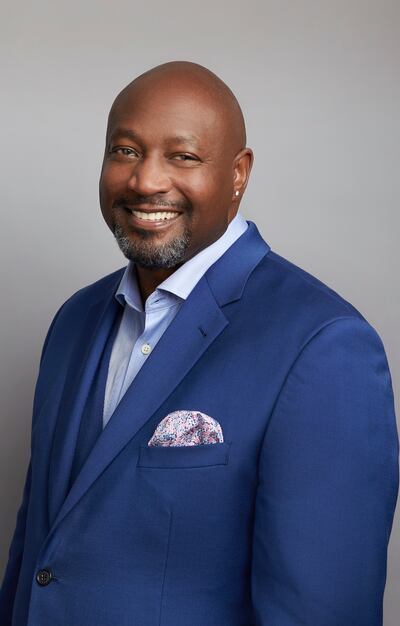
The Business of Fashion
Agenda-setting intelligence, analysis and advice for the global fashion community.

Agenda-setting intelligence, analysis and advice for the global fashion community.

Increased awareness around discrimination and bias in fashion in recent years has revealed a critical need for sustained diversity, equity and inclusion (DEI) work in businesses, from both a moral standpoint and to ensure an effective retention strategy — especially for the next generation of talent. Management consultancy Gallup found that Gen-Z and younger millennials today place support for a diverse and inclusive workplace as a top priority in what they look for in an employer.
Tapestry, a large global fashion company based in New York consisting of Coach, Kate Spade and Stuart Weitzman, has committed to creating a work environment that is more diverse, equitable and inclusive. To spearhead this work, the organisation recruited David Casey as its first chief inclusion and social impact officer earlier this year, who was set an immediate task to expand diversity within leadership teams and actively reduce gaps in inclusion by gender and race/ethnicity.
Focusing on platforming its existing talent through career progression and development, the company has also developed a global people manager development programme, already filling 80 percent of its leadership roles internally in 2021.
Due to such endeavours, Tapestry was featured on Forbes’ “Best Employers for Diversity” list for the fifth consecutive year, as well as on the “Best Employers for Women” list in 2022. It also scored 100 on the Human Rights Campaign’s Corporate Equality Index for the eighth consecutive year, and was named the “Best Place to Work for LGBTQ+ Equality.”

Now, BoF sits down with Tapestry’s chief inclusion and social impact officer, David Casey, to discuss how Tapestry is executing its social impact efforts, its priorities moving forward, and the challenges and opportunities the company faces in working towards its 2025 goals.
What does it mean to belong at Tapestry?
We believe that being true to yourself is core to who we are as a company. There are three parts to this: first, your voice is valued here; second, your ambitions are supported; and third, your work is recognised. We do believe that difference sparks brilliance so we actively welcome people and ideas from everywhere to join us to stretch what is possible.
At Tapestry, we refer to diversity and inclusion as EI&D because we lead with equity. We aim to understand and appreciate that each of our brands has a unique voice and clients, but under the Tapestry umbrella, we all serve a common opportunity and purpose to have a positive impact on society.
What are your priorities as Tapestry’s new chief inclusion and social impact officer?
First and foremost, I am continuing to learn. The EI&D function has always been a priority for us but became a formalised function two years ago, so as we think about the near term, it’s about how we operationalise this work. As a result, we have four key pillars that we are focusing on.
Our first pillar is talent, making sure that we are getting more than our fair share of the diverse talent in the marketplace, and ensuring equitable opportunities for growth and progress for people once they join the organisation. The second is culture. When people join our organisation, we want to create a positive experience here, but we understand that is going to be unique for every single one of our employees.
The third pillar is community and how we make sure that we are not just in communities, but we are a part of that community fabric. Fourth is marketplace, and how we create and ensure that we have an inclusive experience for every person who engages us, either through a physical facility or digitally.
Our near-term priority is moving from awareness of those pillars to having them show up in every single part of how we run the business.
How have Tapestry and its brands implemented equity, inclusion and diversity priorities so far?
From a talent perspective, it is diversifying where we go to source talent and opening ourselves up to think differently about the types of career experiences and educational experiences that individuals may have to have, or need to have, in order to join the organisation.
It is not just enough to have representation — we want to understand and impact the lived experiences of our associates.
From a culture perspective, we have a number of employee resource groups, such as the Black Alliance, Working Parents and Caregivers, Prouder Together, which represents the LGBTQIA+ community, and Asian Heritage Alliance resource groups. We hope this gives all of our employees an opportunity to feel a part of our broader organisation, ensuring they find those communities within the company to feel a sense of connection and have a more intimate cohort.
As you think about the community pillar, we have also done a lot across the Tapestry and brand foundations to step up and ensure that we are giving back to the communities in which we operate. In some cases, such as the Kate Spade New York Social Impact Council, it is focused on mental health and wellbeing. In other cases, such as the Coach Dream It Real programmes, it is focused on educational opportunities to help drive equity.
What are Tapestry’s main goals and challenges within its EI&D strategy?
One thing that we set out to do was to build diversity in North American Tapestry and brand leadership by increasing racial and ethnic representation in leadership positions to better reflect the general corporate population.
The second goal we had was to reduce differences in the Employee Inclusion Index, based on gender and race/ethnicity, and to demonstrate our focus on career progression, development and mobility by filling 60 percent of our leadership roles at VP level and above internally.
One on-going challenge is the increasing, rapidly changing demographics of the workforce. We are learning in real-time, along with every other company, as we think about diversifying our talent base, understanding what the needs of underrepresented demographics in the workplace going forward are, what our new reality will be. We have made significant improvements, but we have more work to do. There’s no point in time where we are going to be done with EI&D.
What efforts is Tapestry making to tackle gender and racial inequality in the workplace?
We are looking to cultivate a culture of inclusion through our Inclusion Index, where we survey our employees at several points throughout the year and ask them to give us feedback that is part of our EI&D scorecard, as well as making progress on closing any gaps that we may see across demographics. It is not just enough to have representation — we want to understand and impact the lived experiences of our associates.
It is difficult to drive sustainable accountability across organisations [...]. One way to do that is to attach accountability to compensation.
It is difficult to drive sustainable accountability across organisations, but we are holding true to our focus and commitment. One way to do that is to attach accountability to compensation. We announced in FY22 that we were going to tie 10 percent of our leadership team’s annual incentive compensation to making progress in EI&D. That progress is measured through an annual scorecard, with both qualitative and quantitative metrics.
How does Tapestry’s EI&D work extend to external partnerships?
We want to make sure that we are helping to drive equality and equity through the educational experience of young people — BIPOC individuals in particular. We are supporting the Fashion Institute of Technology’s Social Justice Centre as one of three founding partners to commit $1 million to support their work bringing a more diverse group into the higher-education pipeline and to enhance opportunities for professional growth within our industry.
What excites you about the future of EI&D within Tapestry?
What excites me about our four-pillar framework is that it touches every single part of how we do business. There’s a role for every single one of our employees to play — from our stores to the C-Suite. You don’t have to be a part of the EI&D team, you don’t have to be a part of HR, you don’t have to be a member of our executive committee — you can lead from where you are.
We can do good for the stakeholders who rely on us and depend on us and we can help the company do well simultaneously. That’s what excites me about this holistic approach to the work that Tapestry has underway and that we’ll be building upon going forward.
This is a sponsored feature paid for by Tapestry as part of a BoF partnership.
Discover the most exciting career opportunities now available on BoF Careers — including jobs from Tapestry, Alexander McQueen and Toteme.
A US regulator has banned most uses of the clauses, which started as a way for fashion companies to prevent senior executives from walking off with trade secrets, but have become a standard retention tool.
Check out this week’s new partners and openings on BoF Careers, the global marketplace for fashion talent.
BoF Careers provides essential sector insights for fashion designers this month, to help you decode fashion’s creative and commercial landscape.